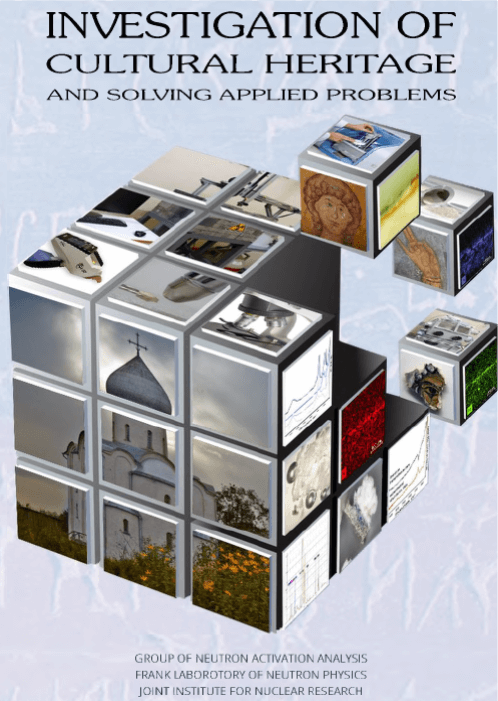The Group of neutron activation analysis (GNAA), Frank Laboratory of Neutron Physics (FLNP), Joint Institute for Nuclear Research studies objects of cultural heritage (pigments, plaster bases and binders of monumental paintings, ancient building materials, human remains, archaeological ceramics, glass, metals and alloys), as well as samples of other origin (geological, ecological, extraterrestrial).
Scientists from GNAA practice comprehensive approach to research involving the use of various complementary methods: elemental composition is determined by neutron activation (NAA), prompt gamma activation (PGAA) and X-ray fluorescence (XRF) analysis. Mineral and molecular composition is detected using Raman and infrared spectroscopy. The data obtained are confirmed by means of stratigraphy, optical and polarized microscopy, and chemical analysis. Along with laboratory experiments, portable devices are used for in situ research. The obtained data are interpreted together with subject matter experts, also digital reconstruction and statistical treatment are used.
Samples are prepared for research in a chemical laboratory equipped with modern equipment.
Basic FLNP facilities IREN and IBR-2 are used to carry out NAA. The elemental composition for short and medium lived isotopes is determined by means of the IREN facility. The REGATA-2 pneumatic transport system (PTS) at the IREN facility is used to automate the delivery of containers with samples to the irradiation position and back. PTS characteristics are as follows:
- number of irradiation channels – 2;
- neutron fluxes at the irradiation position: thermal 1-2108 neutrons/(cm2·s), resonance 2-4·107 neutrons/(cm2·s);
- the average container delivery time to the irradiation position is 10 seconds, the return of the container takes about the same time;
- air is released from the pipeline within 50 seconds after the container arriving. Therefore, the minimum irradiation time is about one minute;
- pipeline length is about 40 meters;
- nominal mass of the sample - 3 grams. The maximum mass of the container with the sample is not less than 13 grams. The mass of the empty container with a lid is approximately 6 grams.
More information is available in the booklet, which can be downloaded using the link
Detailed description of the REGATA-2 PTS is available in the publication: V.V. Lobachev, A.Yu. Dmitriev, S.B. Borzakov, A.A. Smirnov, I.S. Zhironkin, E.A. Golubkov, and V.N. Shvetsov. Pneumatic Transport System REGATA-2 for Automation of Activation Analysis at the IREN Facility, FLNP JINR. Physics of Particles and Nuclei Letters, 2023, Vol. 20, No. 5, pp. 1064–1072; DOI: 10.1134/S1547477123050503.
Medium and long lived isotopes are produced by means of the facility on the channel 3 of the IBR-2 reactor.
The features of the IREN facility make it possible to use not only a neutron-producing target but also a gamma-producing one. The REGATA-2 is equipped with a separate channel for gamma activation analysis (GAA). The possibility of GAA has been confirmed experimentally. It is necessary to create and implement the appropriate methodology.
Sample changers of up to 45 containers are used to automate the measurements of induced activity spectra.
The nondestructive PGAA is carried out on the channel 11b of the IBR-2 reactor.
GNAA collaborates with various organizations from Russia, Kazakhstan, Egypt, Azerbaijan, Vietnam and South Africa in the field of art history, restoration, archaeology, geology, and ecology within the framework of Cooperation agreements and Joint projects.
GNAA has regularly participated in proficiency tests organized by IAEA. The elemental composition of the test samples is determined by different methods: NAA, PGAA, and XRF. GNAA employees regularly upgrade their skills at various courses.
